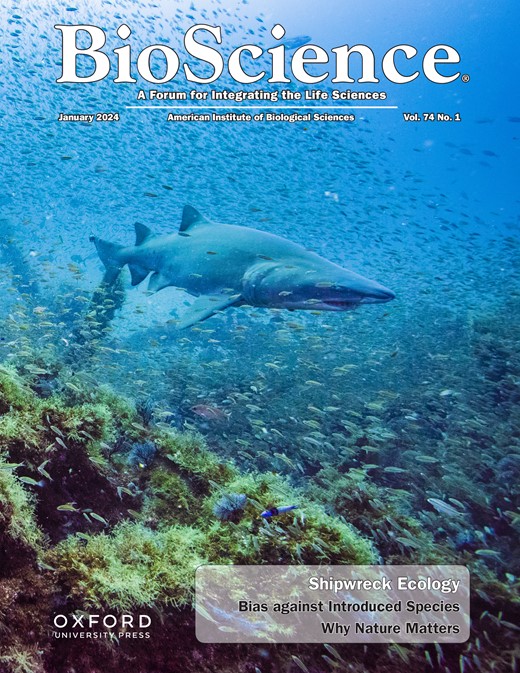Ferns as facilitators of community recovery following biotic upheaval
IF 7.6
1区 生物学
Q1 BIOLOGY
引用次数: 0
Abstract
The competitive success of ferns has been foundational to hypotheses about terrestrial recolonization following biotic upheaval, from wildfires to the Cretaceous–Paleogene asteroid impact (66 million years ago). Rapid fern recolonization in primary successional environments has been hypothesized to be driven by ferns’ high spore production and wind dispersal, with an emphasis on their competitive advantages as so-called disaster taxa. We propose that a competition-based view of ferns is outdated and in need of reexamination in light of growing research documenting the importance of positive interactions (i.e., facilitation) between ferns and other species. Here, we integrate fossil and modern perspectives on fern ecology to propose that ferns act as facilitators of community assemblage following biotic upheaval by stabilizing substrates, enhancing soil properties, and mediating competition. Our reframing of ferns as facilitators has broad implications for both community ecology and ecosystem recovery dynamics, because of ferns’ global distribution and habitat diversity.蕨类植物是生物动荡后群落恢复的促进因素
从野火到白垩纪-古近纪小行星撞击(6600万年前),蕨类植物的成功竞争是生物动荡后陆地重新定居假说的基础。蕨类植物在原生演替环境中的快速重新定殖被假定为是由蕨类植物的高孢子产量和风力传播所驱动的,重点是它们作为所谓的灾害类群的竞争优势。我们认为,基于竞争的蕨类植物观点已经过时,需要重新审视,因为越来越多的研究记录了蕨类植物与其他物种之间积极互动(即促进作用)的重要性。在这里,我们整合了蕨类生态学的化石观点和现代观点,提出蕨类植物通过稳定基质、增强土壤特性和调解竞争,在生物动荡后充当群落组合的促进者。由于蕨类植物在全球的分布和栖息地的多样性,我们将蕨类植物重新定义为促进者对群落生态学和生态系统恢复动态都有广泛的影响。
本文章由计算机程序翻译,如有差异,请以英文原文为准。
求助全文
约1分钟内获得全文
求助全文
来源期刊

BioScience
生物-生物学
CiteScore
14.10
自引率
2.00%
发文量
109
审稿时长
3 months
期刊介绍:
BioScience is a monthly journal that has been in publication since 1964. It provides readers with authoritative and current overviews of biological research. The journal is peer-reviewed and heavily cited, making it a reliable source for researchers, educators, and students. In addition to research articles, BioScience also covers topics such as biology education, public policy, history, and the fundamental principles of the biological sciences. This makes the content accessible to a wide range of readers. The journal includes professionally written feature articles that explore the latest advancements in biology. It also features discussions on professional issues, book reviews, news about the American Institute of Biological Sciences (AIBS), and columns on policy (Washington Watch) and education (Eye on Education).
 求助内容:
求助内容: 应助结果提醒方式:
应助结果提醒方式:


